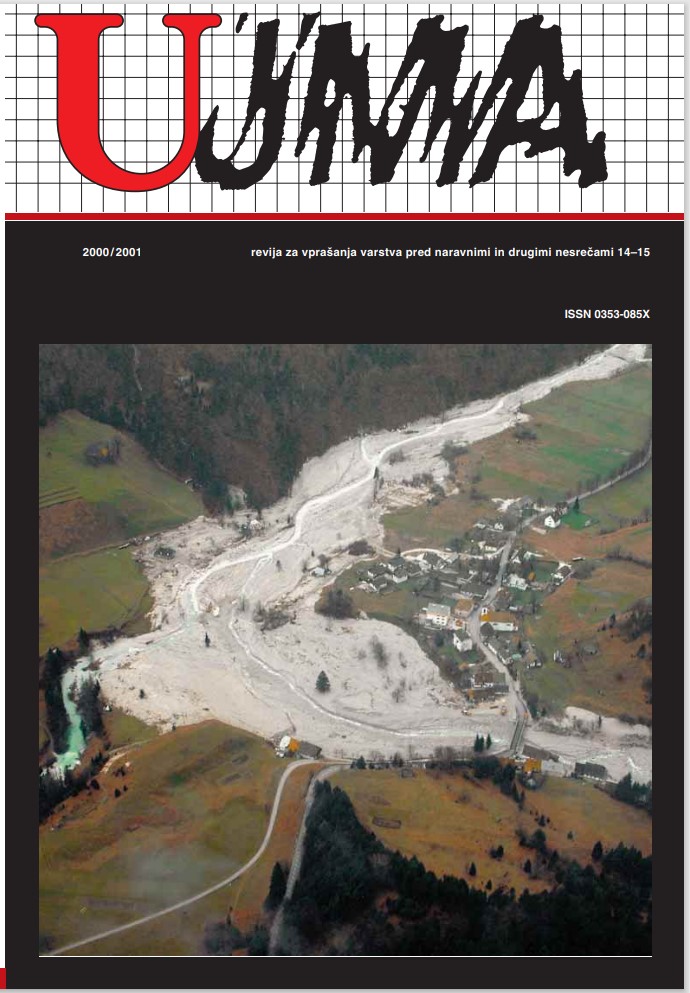WATER MANAGEMENT PLANNING AS AN INSTRUMENT FOR REDUCING THE RISKS OF NATURAL AND ECOLOGICAL ACCIDENTS
Abstract
In the Republic of Slovenia, water has been declared a public good and the property of the State. However, an integrated approach to water management issues has yet to be established. It is important to emphasize that the new Water Act, which is currently in the parliamentary procedure, will set the legal bases for integrated water management planning. The new Water Act will proclaim water to be a public good, but in no one’s ownership and under special protection of the state. The recent Water Act dates from 1981. After attaining its independence, Slovenia adopted several laws which have brought significant changes in water legislation and nullified almost half of the articles in the present Water Act. The most urgent and critical issue to be solved is water management planning, which was abolished twelve years ago. Even if there is no legal basis for specific water management planning, there are some efforts that have to be mentioned in this context. An older work that is still applicable and serves as an important professional background is the “River Basin Characterization”, which continues to represent an important decision support tool as well as a source of information on natural conditions. The problem is that this document has not been regularly updated and was never fully verified or approved. In spite of the fact that the current Water Act does not give a legal basis for activities in water management planning, some recent pilot projects present an important step forward in gaining experience on how to prepare river basin characteristics and river basin management plans in accordance with the new European water legislation. These documents are prepared on the basis of Slovenia’s various obligations of Slovenia as a part of EU preaccession activities. With the proper precautions and integrated approach in the process of water management planning, one can prevent many ecological accidents that are caused by unsuitable land use and incorrectly or poorly planned human activities having an impact on the environment. One of the important goals of the new water management plan is, therefore, to direct unsuitable land use away from areas that are subjected to intensive natural processes (floods, avalanches, landslides etc.) and areas that represent the most important strategic natural resources (drinking water, wetlands etc.) in a manner preventing the possible material damage or even the loss of human lives in the long run.
References
Directive of the European Parliament and of the Council Establishing a Framework for Community Action in the Field of Water Policy, referenčna verzija Brussels, 18.july 2000.
Rapopport, A., 1969. House Form and Culture, Prentice Hall Inc., Englewood Cliffs, N.J.
Vahtar, M., Kompare, B., Horvat A., Globevnik L., Panjan J., Prestor, J., 1999. Sinteza vodnogospodarskih vsebin kot podlaga za zasnovo prostorskega razvoja na nivoju države, FGG-IZH, Ljubljana.
Downloads
Published
Issue
Section
License

This work is licensed under a Creative Commons Attribution-NonCommercial-NoDerivatives 4.0 International License.
The articles are made available to the public under Creative Commons Attribution-NonCommercial-NoDerivatives 4.0 International (CC BY-NC-ND 4.0).


